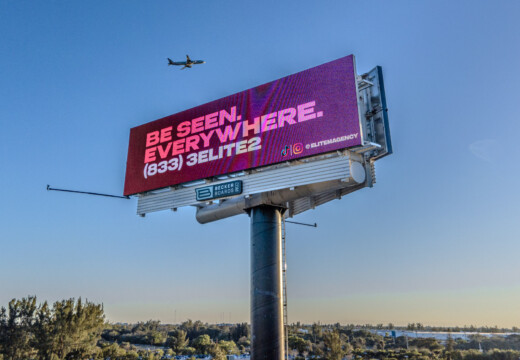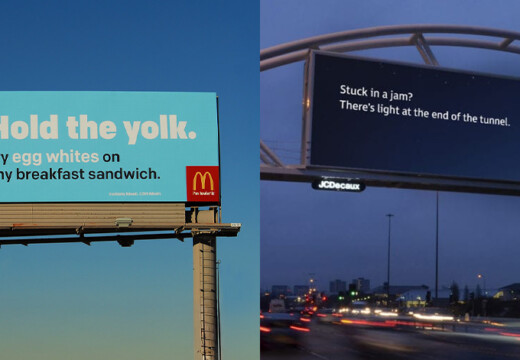When placing billboards near homes, regulations ensure balance between advertising needs and residential comfort. Here’s a quick summary:
- Distance Requirements:
- Rural Areas: 660 feet from highways, 1,000 feet from homes (digital billboards).
- Urban Areas: 300–500 feet from homes, 500–1,000 feet for digital billboards.
- Mixed-Use Zones: 250–400 feet for standard billboards, 400–800 feet for digital.
- Zoning Rules:
- Billboards are banned in strictly residential zones (e.g., R-1, R-2).
- Commercial and mixed-use zones may allow billboards with conditions like buffer zones.
- Lighting and Sound Restrictions:
- Digital billboard brightness: ≤ 0.3 foot-candles above ambient light at property lines.
- Nighttime dimming: 50–65% brightness reduction; often turned off 11 PM–6 AM.
- No audio or noise limits within 5–10 decibels above ambient sound.
- Permit Process:
- Submit site plans, lighting analysis, structural specs, and zoning approvals.
- Impact Reduction:
- Use barriers (trees, fences), adjust light direction, and place billboards away from homes.
Quick Comparison Table
| Zone Type | Standard Billboard | Digital Billboard |
|---|---|---|
| Rural Areas | 660 feet | 1,000 feet or more |
| Urban Areas | 300–500 feet | 500–1,000 feet |
| Mixed-Use Zones | 250–400 feet | 400–800 feet |
These rules aim to minimize disruption to neighborhoods while allowing effective advertising.
(05/01/17) Zoning Committee Meeting
Legal Requirements for Residential Areas
When it comes to placing billboards near homes, specific legal standards ensure a balance between advertising needs and residential comfort. Here’s what you need to know about these regulations.
Required Distances
The distance a billboard must maintain from homes depends on the area and type of billboard:
| Zone Type | Standard Billboard | Digital Billboard |
|---|---|---|
| Rural Areas | 660 feet from highways | 1,000 feet or more from homes |
| Urban Areas | 300–500 feet from homes | 500–1,000 feet from homes |
| Mixed-Use | 250–400 feet from homes | 400–800 feet from homes |
This table highlights the minimum distance requirements based on zoning and billboard type.
Zoning Rules
In strictly residential zones (like R-1 and R-2), billboards are generally prohibited. However, in commercial or mixed-use zones, they may be allowed if specific conditions are met, such as buffer zones or obtaining special permits. Additionally, overlay districts often impose stricter rules, even in areas where billboards are typically permitted.
Light and Sound Limits
Digital billboards are subject to strict controls to minimize their impact on nearby homes:
- Brightness: Must not exceed 0.3 foot-candles above the ambient light at residential property lines.
- Nighttime Dimming: Brightness levels must be reduced by 50–65% during nighttime hours.
- Operating Hours: Many jurisdictions require digital billboards to turn off between 11 PM and 6 AM.
- Light Direction: Shielded fixtures are required to prevent light from spilling into residential areas.
- Color Temperature: Limited to 3,000K or lower to help reduce sleep disruption.
For sound, digital billboards must either disable audio features or ensure noise levels stay within 5–10 decibels above the ambient sound within 1,000 feet of homes.
Local authorities ensure compliance with these rules through regular inspections and by addressing complaints from residents. The next section will explore practical steps to meet these legal standards effectively.
Meeting Proximity Requirements
Getting the measurements right and having thorough documentation can make the compliance and permit approval process much smoother.
Distance Measurement Methods
To ensure setback distances are accurate, rely on professional tools:
| Tool Type | Primary Use |
|---|---|
| GPS Mapping | Initial site assessment |
| Measuring Wheel | On-site verification |
| Laser Distance Meter | Precise measurements |
| GIS Software | Property line mapping |
It’s a good idea to combine GIS mapping with on-site verification tools like a measuring wheel or laser distance meter. This approach ensures setbacks from the nearest residential property line are confirmed with precision.
Permit Application Process
Submitting a complete permit application is key to speeding up the approval process. Here’s what you’ll typically need:
- Site Plan: Includes detailed drawings that show the exact billboard location, setbacks, and property boundaries.
- Engineering Documents: Covers structural specs and foundation details.
- Lighting Analysis: Demonstrates light levels at property lines to comply with regulations.
- Property Documentation: Proof of ownership or lease agreements.
- Impact Studies: Includes traffic and environmental assessments, if required.
For instance, in Heath, Ohio, applicants must demonstrate that their proposed billboard location is at least 1,000 feet from residential district boundaries and doesn’t exceed 35 feet in height above street elevation. Additionally, following design rules is essential to securing compliance.
Design Rule Compliance
Adhering to design guidelines ensures visibility while minimizing the impact on nearby residential areas. Typical requirements include:
- Maximum Display Area: Often capped at 378 square feet for single-face displays.
- Height Restrictions: Generally limited to 35 feet above street level.
- Extension Limits: Top extensions are usually 4–5 feet, sides 2 feet, and bottom 1–2 feet.
For digital billboards, platforms like Blip provide detailed design guidelines to ensure your ads are both compliant and visible. Blip also offers a streamlined review process, often completing initial reviews in just 90 minutes, to help advertisers stay within local regulations.
"Billboards are one of the most impactful ways to advertise, and with Blip, you spend a fraction of what you would end up paying elsewhere", says Ray Bowens, Founder of Hashtag-Vape.
sbb-itb-2e2e93f
Reducing Impact on Homes
Minimizing the effects of billboards on nearby homes involves smart use of physical barriers, thoughtful light management, and careful location planning. These strategies, paired with regulatory compliance, help lessen disturbances to residential areas.
Setting Up Barriers
Physical barriers can serve as an effective shield between homes and billboards:
| Barrier Type | Description |
|---|---|
| Evergreen Trees | Provide year-round coverage with dense foliage. |
| Privacy Fencing | Ideal for smaller spaces to create defined barriers. |
| Landscaped Berms | Act as natural buffers in larger, open areas. |
| Sound Barriers | Help reduce noise in high-traffic zones. |
When choosing barriers, consider local climate and upkeep requirements. For example, dense evergreen plantings not only block billboard views but also enhance the property’s curb appeal.
Light Control Methods
To reduce light spillover from billboards, especially digital ones, several techniques can be applied:
- Automatic dimming systems that adjust brightness based on surrounding light levels.
- Directional shields to focus light strictly on the billboard surface.
- Curfew settings that lower brightness during nighttime hours.
Local regulations often mandate that billboard lighting stays within specific foot-candle limits at residential property lines. These measures ensure compliance with both state and local lighting standards.
Location Planning
Thoughtful placement of billboards is key to reducing their impact on homes. Effective strategies include:
- Placing billboards at least 100 feet away from residential boundaries.
- Angling displays away from home windows to reduce direct visibility.
- Utilizing existing structures, like buildings or trees, as natural buffers.
- Prioritizing locations along commercial corridors rather than residential streets.
For example, Cleveland’s zoning code enforces greater setbacks for billboards near homes and restricts their height. The American Planning Association emphasizes that such controls help maintain the aesthetic and economic value of residential neighborhoods.
Conclusion: Following Proximity Rules
Main Compliance Steps
Placing billboards near residential areas requires careful attention to local regulations. For instance, Orange County, Florida, mandates a 200-foot buffer for standard billboards. Smaller, non-illuminated signs (under 16 feet tall and 75 square feet) are allowed within 100 feet of homes.
| Step | Requirements | Documentation |
|---|---|---|
| Distance Check | Conduct site surveys | Site plans, property markers |
| Zoning Approval | Ensure commercial/industrial zoning | Zoning maps, permits |
| Impact Review | Monitor light and sound levels | Environmental reports |
| Permit Filing | Submit complete applications | Structural plans, leases |
Following these steps ensures a smoother process for compliance and billboard placement.
Blip Platform Features

Blip’s online marketplace streamlines the placement of digital billboards by offering tools to simplify compliance. Key features include:
- Real-time location data to assess proximity to residential areas
- Scheduling tools to control brightness and display times
- A two-step content moderation system to meet local standards
- Design guidelines tailored to maximize visibility and meet regulations
Blip’s process not only simplifies compliance but also aligns with best practices for cost-efficient billboard advertising.
Closing Points
Combining compliance efforts with platform tools ensures smoother implementation. Federal rules, for example, prohibit billboards within 660 feet of federal highways in rural areas [1], while urban areas often have their own spacing requirements based on local laws.
Maintaining proper documentation – like surveys, permits, and compliance records – helps avoid violations and fosters trust within the community. Regular monitoring and addressing concerns promptly are essential for staying compliant and maintaining positive relationships with local residents.
FAQs
What are the rules for placing billboards near residential areas?
Billboard placement near residential areas is typically governed by local zoning laws designed to protect the living standards of the community. These regulations often cover aspects like how far the billboard must be from homes, limits on brightness or size, and even restrictions on the type of content displayed.
If you’re considering installing a billboard near a neighborhood, it’s essential to check with your local zoning authority or review municipal regulations to ensure everything is up to code. These rules are in place to preserve the look and feel of the community while reducing any potential inconvenience for residents.
What are the lighting rules for digital billboards near residential areas?
Lighting Restrictions for Digital Billboards Near Homes
Digital billboards near residential areas often face lighting restrictions aimed at reducing their impact on the community. These rules usually set limits on how bright the billboards can be, especially at night, to cut down on light pollution and avoid disturbing nearby residents. Many regulations also require billboards to include dimming technology that automatically adjusts brightness based on the surrounding light conditions.
If you’re dealing with digital billboards, it’s crucial to review local zoning laws and regulations, as these requirements can differ widely depending on the city or state. Being aware of these rules helps strike a balance between effective advertising and respecting the comfort of residential neighborhoods.
How can I ensure my billboard complies with proximity rules near residential areas?
To make sure your billboard placement aligns with proximity rules near residential areas, begin by looking into local zoning laws and regulations. These typically outline the minimum distance required from homes, schools, and other sensitive spots. For precise information, reach out to your city or county planning department.
If you’re using platforms like Blip to manage your digital billboard campaigns, you can take advantage of their tools to select locations that comply with these legal requirements. Blip allows you to filter billboard sites based on specific criteria, helping you stay within the rules while reaching your target audience. Always verify local regulations to avoid potential fines or issues.


